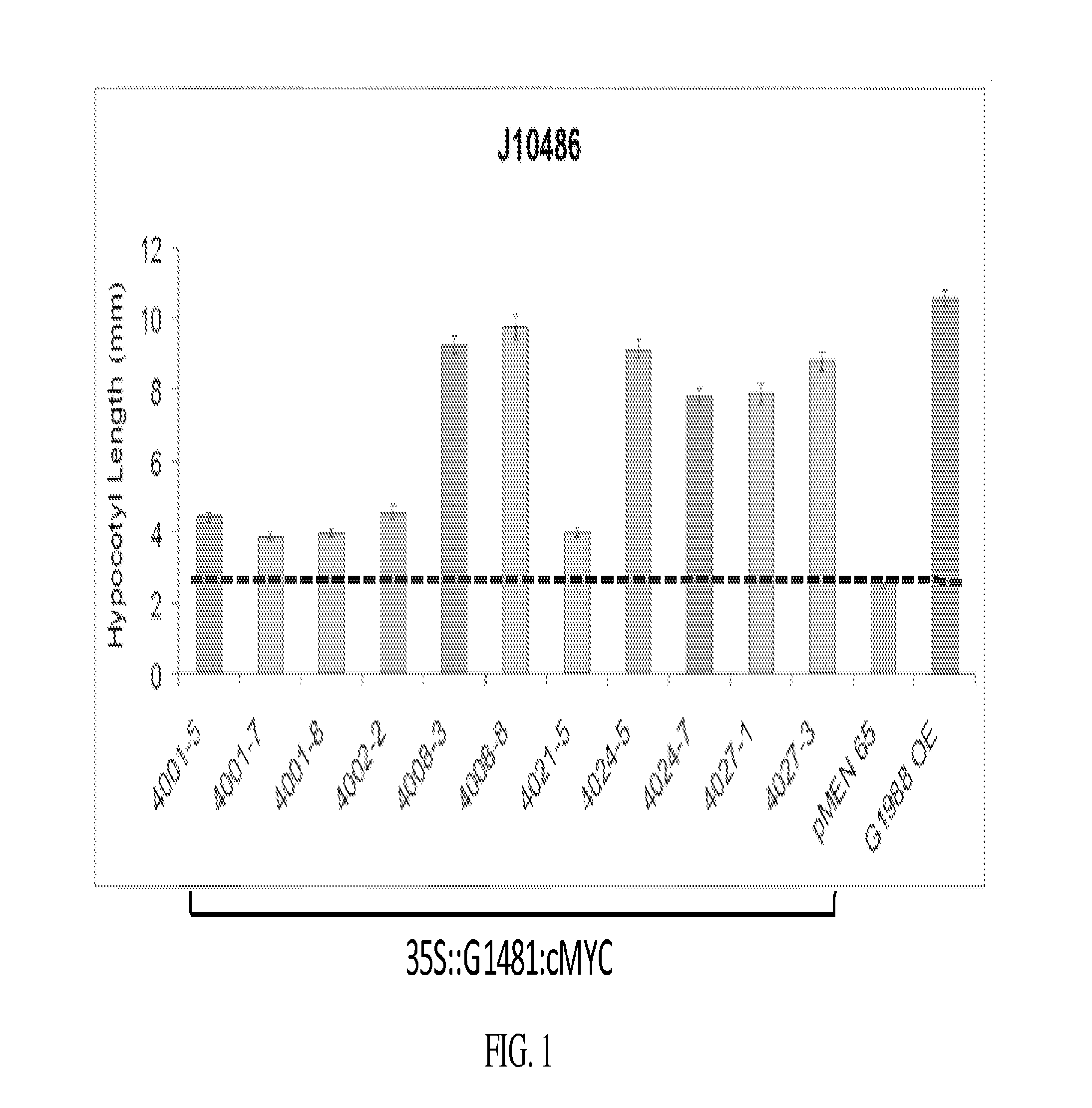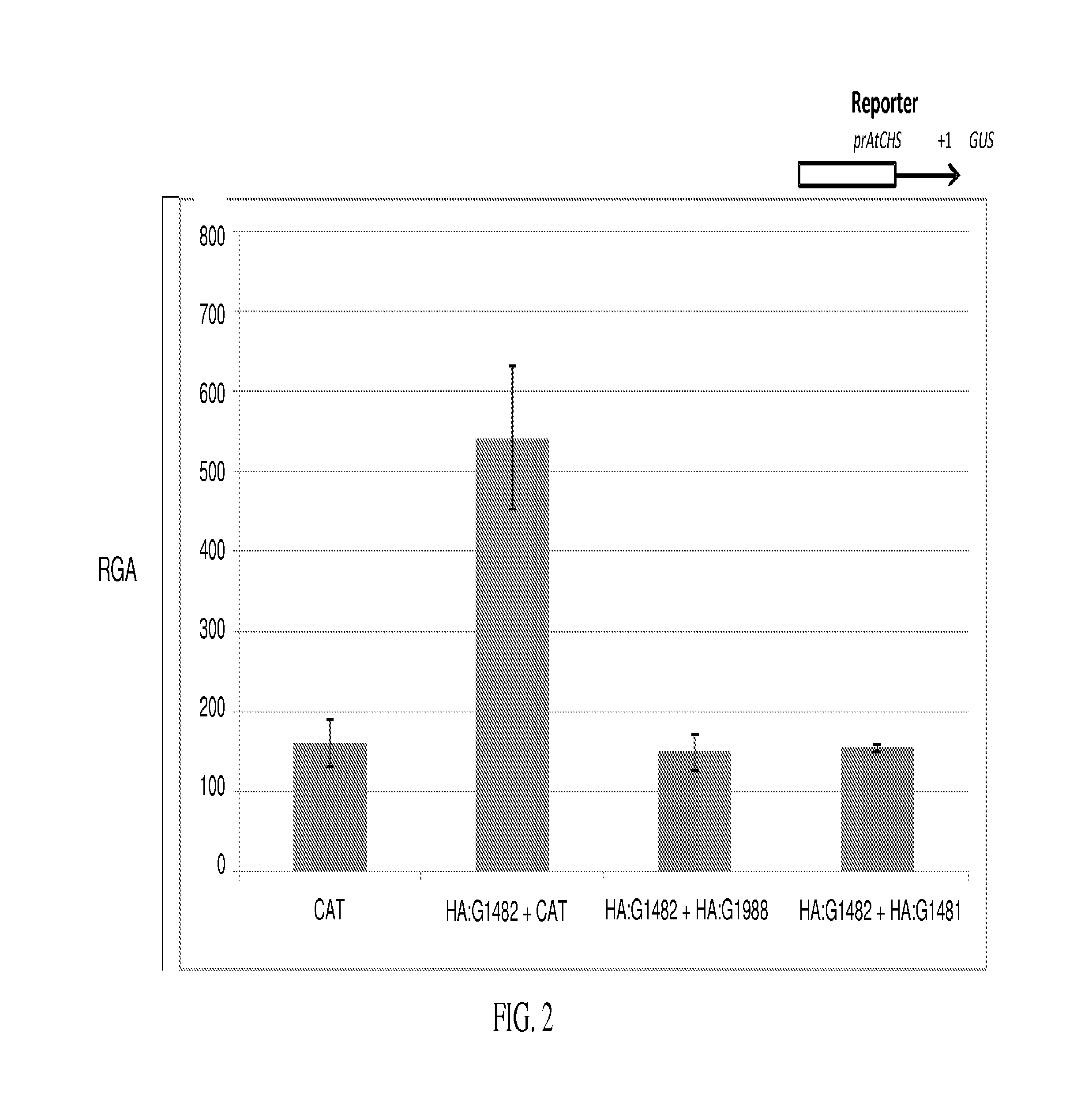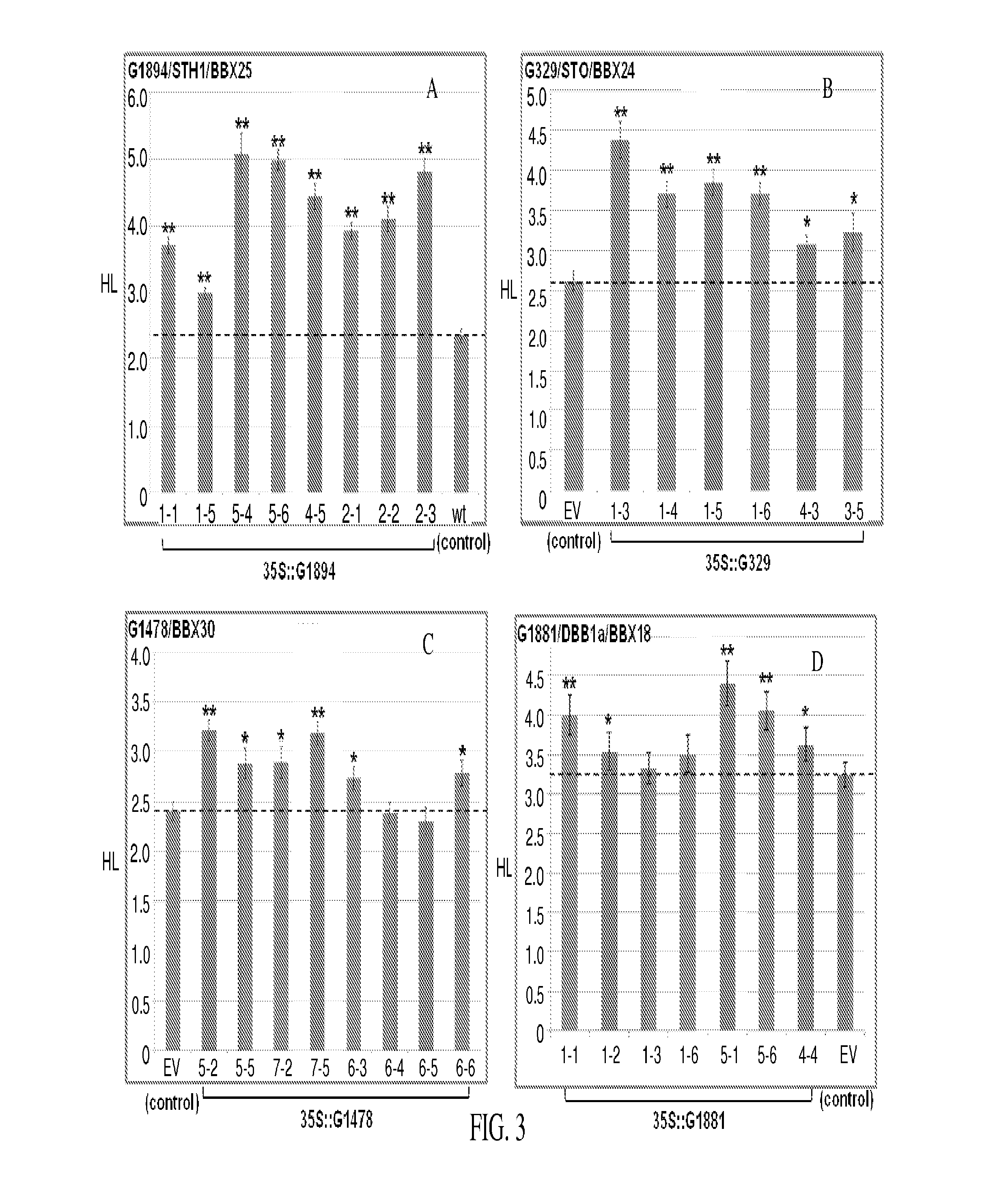Manipulating plant sensitivity to light
a plant sensitivity and light technology, applied in the field of plant genomics and plant improvement, can solve the problems of not providing one with a means to determine, insufficient homolog identification to make specific predictions, etc., and achieve the effects of improving yield and growth, increasing or decreasing activities, and improving vigor
- Summary
- Abstract
- Description
- Claims
- Application Information
AI Technical Summary
Benefits of technology
Problems solved by technology
Method used
Image
Examples
examples
[0154]It is to be understood that the present disclosure is not limited to the particular devices, machines, materials and methods described. Although particular embodiments are described, equivalent embodiments may be used to produce the instant compositions and practice the instant methods.
[0155]The disclosure, now being generally described, will be more readily understood by reference to the following examples, which are included merely for purposes of illustration of certain aspects and embodiments of the present disclosure and are not intended to limit claims to the instant compositions or methods. It will be recognized by one of skill in the art that a polypeptide that is associated with a particular first trait may also be associated with at least one other, unrelated and inherent second trait which was not predicted by the first trait.
example i
Vector and Cloning Information for Arabidopsis
[0156]A number of constructs were used to modulate the activity of the disclosed sequences. An individual project was defined as the analysis of lines for a particular construct (for example, this might include any of the disclosed lines that constitutively overexpress a disclosed B-box polypeptide sequence). In the present study, a full-length wild-type version of a gene was directly fused to a promoter that drove its expression in transgenic plants. Such a promoter could be the native promoter of that gene, or the CaMV 35S promoter. Alternatively, a promoter that drives tissue specific or conditional expression could be used in similar studies.
[0157]In the present study, expression of a given polynucleotide from a particular promoter was achieved by either a direct-promoter fusion construct in which that sequence was cloned directly behind the promoter of interest, or by a two-component expression system. A direct fusion approach has ...
example ii
Transformation
[0159]Gruber et al., 1993, described several expression vectors and culture methods that may be used for cell or tissue transformation and subsequent regeneration.
Dicot and Monocot Expression Vectors
[0160]Transformation of plants and plant parts by Agrobacterium-mediated transformation can be practiced using a recombinant DNA construct, vector or cassette with the genetic elements as shown in Table 5 for dicots and Table 6 for monocots. The disclosed recombinant polynucleotides in the Sequence Listing “MBI—0120 PCT_ST25” may be incorporated in such recombinant DNA constructs. The elements in a recombinant DNA construct provided in Tables 5 and 6 are only examples of different elements that can be used for the purpose of producing transgenic plants that have incorporated the polynucleotides. Other elements can be used as well in combination with the polynucleotides of the present disclosure to achieve trait modification.
[0161]A base recombinant DNA construct specificall...
PUM
| Property | Measurement | Unit |
|---|---|---|
| Fraction | aaaaa | aaaaa |
| Fraction | aaaaa | aaaaa |
| Fraction | aaaaa | aaaaa |
Abstract
Description
Claims
Application Information
 Login to View More
Login to View More - R&D
- Intellectual Property
- Life Sciences
- Materials
- Tech Scout
- Unparalleled Data Quality
- Higher Quality Content
- 60% Fewer Hallucinations
Browse by: Latest US Patents, China's latest patents, Technical Efficacy Thesaurus, Application Domain, Technology Topic, Popular Technical Reports.
© 2025 PatSnap. All rights reserved.Legal|Privacy policy|Modern Slavery Act Transparency Statement|Sitemap|About US| Contact US: help@patsnap.com



